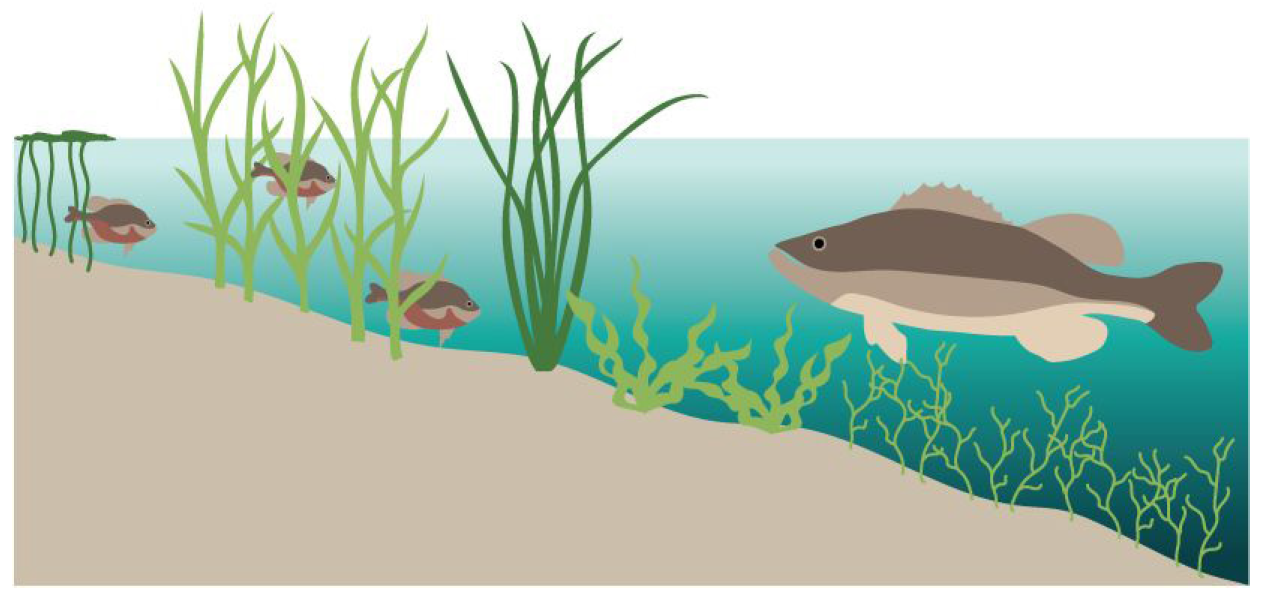Florida is home to literally thousands of ponds, some natural, some man made. Most of these ponds are used solely for recreation. However, some ponds are used for farming needs, whether for irrigation or livestock purposes. In either case, ponds can provide excellent fishing environments, if managed properly.
A good philosophy to have when thinking of pond management, is to treat your pond as if it were your peanut field. Ponds, like crops that are carefully managed, will bring about consistent yields. After you have determined the overall goals for, and uses of, your pond, there are four key components to pond management. To be successful, you’ll need to:1) stock ponds with the correct species and the correct amount of fish, 2) harvest larger, mature fish at times; 3) maintain aquatic vegetation and 4) monitor and maintain nutrient water quality.

Stocking ponds can be tricky. Some species will take over a pond, while others will simply become food for predator species. The combination of large mouth bass, channel catfish and bluegill (also referred to as bream or sunfish) is a popular stocking balance among pond owners. Fingerling fish for stocking sizes range between 1 to 4 inches in length. For Florida ponds, 100 bass, 100 catfish and 500 bluegill per acre is usually the recommended practice. Fish removal is required to keep a population in balance. Generally, ponds that are ignored by fisherman, usually become unproductive as a crowding effect will occur resulting in small, stunted fish. By catching and removing larger species of fish, predation decreases, resulting in a more balanced size population.
Controlling aquatic weeds is a common problem in pond management. Submerged and rooted aquatic vegetation have both benefits and drawbacks. Vegetation allows for cover habitat to allow small fish to escape predators. Vegetation also is a viable food source in itself, as well as providing housing for insects, which fish feed upon. However, if not monitored, aquatic vegetation can spread over a pond area and remove needed nutrients from the water column. Aquatic weed control can be accomplished through a number of management techniques, such as physical control, where vegetation is removed by hand, by mechanical control using mechanical harvesters, by the use of aquatic herbicides, or by the use of the biological control called grass carp (White Amur). Contact your local county extension agent for herbicide recommendations. The use of grass carp requires a permit from the Florida Fish and Wildlife Commission before stocking this species.
Nutrient management is important to pond water quality and productivity. Again, thinking in terms of managing your row crop field, if your pond lacks sufficient nutrient levels, fertilizing the pond will ensure the balance of nutrients is present. Proper application will increase food sources for the water column food chain. Before fertilizing, however, liming maybe be required. Liming is important, as when pH drops below 6.0, water becomes acidic and the efficient use of nutrients decreases. Liming solves this by increasing the pH and alkalinity of the water.
By fertilizing, ponds can see fish production increase three fold. Phosphorus is the limiting factor in freshwater systems, therefore nitrogen and potassium will normally be in smaller ratios in the fertilizer equation, N:P:K or percentages of nitrogen (N), phosphorus (P) and potassium (K). Suggested application rates of commonly used pond fertilizers are in Table 1. It’s important to note that if a fertilization program is implemented, it should continue year to year or risk stunted fish growth due to reduction in food resources. Pond owners should also be aware that when you feed fish, you are also adding nutrients to the pond, in essence fertilizing through the fish. Contact your local county extension agent for more information about the right liming and fertilizing amounts for your pond.

Keep in mind, ponds can be difficult to manage due to complex biological systems. Ponds are also highly individualized. Two ponds in the same watershed, only miles apart, can have vastly different characteristics. However, if you can keep the right balance of fish and aquatic plant species, the family can really enjoy throwing out the hook, line and sinker and bringing home fresh fish for dinner on a regular basis.
For more information, use the following fact sheet links:
Managing Florida Ponds for Fishing by Dr. Charles E. Cichra
Fertilization of Fresh Water Fish Ponds by Dr. Craig Watson & Dr. Charles E. Cichra
Managing Farm Ponds for Fishing by Dr. Jack Whetstone, Clemson Extension
An Equal Opportunity Institution. UF/IFAS Extension, University of Florida, Institute of Food and Agricultural Sciences, Nick T. Place, Dean for UF/IFAS Extension. Single copies of UF/IFAS Extension publications (excluding 4-H and youth publications) are available free to Florida residents from county UF/IFAS Extension offices.
 0
0
